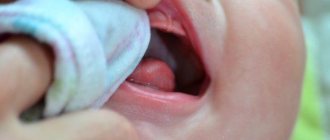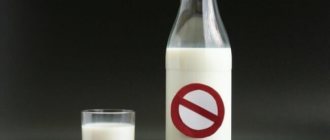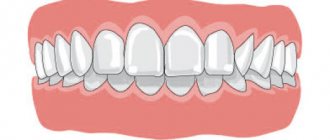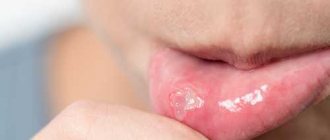general information
From an anatomical point of view, human lips are musculocutaneous folds surrounding the oral cavity. They consist of the orbicularis muscle, skin and mucous membrane. The upper and lower lips are connected to each other by commissures (commissures) at the corners of the mouth.
Lips are constantly exposed to external and internal factors and act as a platform for the manifestation of various diseases. An indicator of pathological changes in the body is, in particular, a symptom that is simply called “white lips”.
Vinikli nutrition - consult a doctor
To make an appointment for a consultation, call or fill out the return form:
(050) 301-99-26 (067) 446-11-79
Damn,
Your request has been successfully sent!
A call center specialist will contact you as soon as possible to clarify all the details.
In normal condition, the lips stretch without pain, have a pink or light red color, and a smooth surface. White lips in a child or adult are a leading sign of various diseases, to which dryness, swelling, soreness, and cracking may be added.
Lips are an important detail that affects the aesthetic perception of the face and performs many other functions. The lips are involved in the formation of facial expressions; they contain receptors responsible for different types of sensitivity. In addition, they serve as an indicator of a person's health status.
When a pathological process occurs in the body, the lips can change their size, become less elastic, lose sensitivity, become covered in rashes, and turn white. Consulting a dermatologist will help eliminate these manifestations or prevent them.
Grodno Regional Children's Clinical Hospital
Details Published March 25, 2015
Pediatrician of the 5th pediatric department, regional freelance pediatric hematologist Guzarevich V.B.
Iron deficiency anemia in adolescents
Puberty is a period of puberty, maturation, growth and development of the adolescent’s body. It has its own unique characteristics, due to powerful vegetative, endocrine and immune restructuring of the body against the background of a physiological growth spurt, as well as disorders of psychosocial adaptation.
It is at this time that numerous transient functional disorders form and previously hidden organic defects appear: hypothalamic dysfunction, with a wide range of clinical manifestations (vegetative-vascular dystonia, metabolic syndrome, etc.), congenital inferiority of connective tissue (visceroptosis, articular hypermobility, osteochondrosis, etc. .), which contributes to a decrease in adaptation to the influence of the external environment. It should be noted that nosological forms during this age period have significant differences. Thus, diseases of the endocrine, nervous and musculoskeletal systems dominate in adolescents, while infectious and colds are more often registered in young children, and in adults the frequency of neoplasms and diseases of the circulatory system increases. This age is characterized by polysystemic (polymorbidity) diseases. For example, in a girl who considers herself practically healthy, a thorough examination is diagnosed with dysmenorrhea, iron deficiency, poor posture, flat feet, nephroptosis, instability of the cervical spine, chronic tonsillitis, myopia, irritable bowel syndrome with constipation, biliary tract dysfunction, crystalluria. Iron deficiency is one of the pressing problems of adolescence. A decrease in the amount of iron in the body leads to impaired hemoglobin formation, the development of hypochromic anemia and trophic disorders in organs and tissues.
At present, there is no doubt that the main factor contributing to the development of iron deficiency anemia in adolescents is the discrepancy between iron reserves in the body and its needs. Iron deficiency in adolescence is much more common in girls, which may be due to heavy menstruation. However, in cases where the need for iron far exceeds its supply, iron deficiency anemia can also develop in young men. The most common reasons in this case are the intensive growth of a teenager, participation in strenuous sports, initial low iron levels against the background of an unbalanced diet, and vegetarianism. It should be remembered that iron deficiency anemia is often observed in conditions such as anorexia nervosa, diseases of the stomach and duodenum, including those associated with H. pylori, repeated intestinal infections, giardiasis, helminthic infestations, and inflammatory bowel diseases.
Clinical manifestations of iron deficiency anemia are pallor of the skin and mucous membranes, loss of appetite, increased physical and mental fatigue, decreased performance, irritability, emotional instability, increased sweating, dizziness, headaches, tinnitus, flashing “flies” before the eyes, increased heart rate, pain in heart. Characterized by dryness and flaking of the skin, dystrophic changes in the nails, dullness and increased fragility of the hair, “jams” in the corners of the mouth; burning of the tongue, difficulty swallowing solid food, perversion of taste and smell, muscle pain, decreased muscle tone, night and day urinary incontinence due to muscle weakness, constipation. Girls may experience menstrual irregularities.
Diagnosis of iron deficiency anemia is based on a decrease in hemoglobin levels below 120 g/l in a general blood test, as well as a decrease in ferritin (iron reserves in the body) in the blood serum.
In all cases of iron deficiency, it is necessary to establish the immediate cause of its occurrence and, if possible, eliminate it. Treatment should be comprehensive and aimed not only at eliminating anemia as a symptom, but also at eliminating iron deficiency and replenishing its reserves in the body.
It is necessary to enrich a teenager’s diet with foods that are the main sources of iron, and not only the amount of iron in a particular product matters, but also the degree of its absorption and the possibility of assimilation by the body.
Meat, especially red meat (veal, beef, lamb, beef tongue), is the best source of heme iron; 20–25% of iron is absorbed from it. Iron from chicken and pork is absorbed to a lesser extent. And in liver and fish, iron is contained in the form of ferritin and hemosiderin, so it is absorbed even worse.
Non-heme iron (vegetables, fruits, nuts) is poorly absorbed (1–5%), and its absorption is influenced by many factors that can either improve or worsen its absorption. Thus, they enhance the absorption of iron: vitamin C (especially abundant in citrus fruits), hydrochloric acid (found in gastric juice), fructose (fruits, honey). Impair iron absorption: drugs that reduce the acidity of gastric juice (antisecretory drugs, antacids), calcium (a lot in dairy products), oxalates (spinach, cabbage, beets, nuts, chocolate, tea, etc.), polyphenols (cocoa, coffee, black and some types of herbal tea), phytic acid (walnuts, almonds, legumes, bran)
However, once anemia has developed, it cannot be cured with diet alone: iron deficiency anemia is treated with iron supplements. Nutrition helps maintain a normal iron balance in the body after treatment. Preference is given to oral forms of iron supplements, since compared to parenteral administration, the rate of restoration of hemoglobin levels is almost the same, and the number of side effects is sharply reduced. Taking iron supplements is recommended 1 hour before meals, preferably in the evening, since the absorption of iron increases in the second half of the day. The therapeutic effect of oral iron intake appears gradually. The first positive clinical sign is the disappearance or reduction of muscle weakness. On days 8–12 from the start of treatment, the content of reticulocytes in the peripheral blood increases. Normalization of hemoglobin occurs by 4–5 weeks from the start of therapy.
In recent years, in the treatment of iron deficiency conditions in adolescents, a new generation of iron-containing drugs based on the polymaltase complex of ferric hydroxide - Ferrum Lek, Maltofer and Maltofer Fol - has been actively used, which in addition to iron contains folic acid, which takes part in the production of nucleic acids, purines, amino acids, stimulating formation of red blood cells. One of the attractive characteristics of these drugs is their low toxicity. The drugs are well tolerated, have a pleasant taste and are in the form of chewable tablets, which undoubtedly increases adherence to therapy. For iron deficiency anemia, children over 12 years of age and adolescents - 100-200 mg per day, and for latent iron deficiency and for preventive purposes - 50-100 mg per day. The duration of therapy, as a rule, is at least 2 months, which is determined by the degree of iron deficiency in the body and depletion of its reserves, the rate of hematopoiesis, and absorption. In the case of clinically pronounced iron deficiency, normalization of hemoglobin is achieved only 2–3 months after the start of treatment. After normalization of hemeglobin levels, it is necessary to continue taking iron supplements in prophylactic doses to restore internal iron reserves for several months.
The prognosis of the disease is favorable: cure occurs in the vast majority of cases. The problem of iron deficiency is, first of all, a nutritional problem, so the primary prevention of iron deficiency anemia is an adequate, balanced diet for a person at any age.
Why are lips white
Human lips, their surface, mucous membrane, and surrounding skin very often display pathological changes that fall within the scope of consideration of several areas of medicine. As a rule, these are deviations that require dermatological, dental, therapeutic care, and the attention of infectious disease doctors.
Only a qualified specialist will be able to determine whether, in your case, white lips are an external sign of illness or a temporary cosmetic problem.
The main reasons why a person’s lips turn white are as follows.
- Manifestation of anemia. The lips and their mucous membranes lose their natural color and turn white due to a decrease in hemoglobin content in the blood. Such changes are observed mainly in iron deficiency or anemia caused by a lack of vitamin B12. The change in color is often accompanied by a deterioration in general health, headaches, burning and painful sensations in the lips, and their dryness.
- Oral candidiasis. More common in young children. It develops when infected with yeast-like fungi of the genus Candida. First, white dotted spots appear on the lips, later they merge and form a continuous film.
- Leukoplakia. A chronic disease accompanied by increased keratinization of the epithelium and inflammation of the mucous membrane. The color of the lesions on the lips can vary, including whitish or white-gray.
- Smoking. Under the influence of nicotine, foci of whitish hyperkeratosis may appear.
- The influence of meteorological conditions (dry air, wind, low temperatures). In such situations, a short-term change in color is observed, followed by restoration of normal tone when the provoking factor is eliminated.
If the natural color of the lips is not restored within several days, they are sore, there are rashes on the surface, or a deterioration in the general condition, you need to consult a doctor - a therapist or a dermatologist. He will study your complaints, conduct anamnestic information collection and a physical examination. If there is a suspicion of a systemic or infectious disease, he will refer a specialist of the appropriate profile for consultation.
White lips in adults and children: diagnosis and treatment
In cases where anamnesis and visual examination of the affected areas of the lips are not enough to make an accurate diagnosis, laboratory and instrumental studies are prescribed. Usually this:
- clinical blood and urine analysis;
- blood chemistry;
- microscopy of lip plaque, histological examination of the selected material;
- Ultrasound, CT, MRI - if necessary, assess the condition of internal organs.
After the diagnosis is made, measures are taken to eliminate the causes of the disease. For some, the doctor will recommend getting rid of bad habits, preventing the adverse effects of the environment, and reviewing their diet in order to saturate it with vitamins and microelements. Others will need drug therapy with systemic and local medications. The choice of medications is carried out taking into account the characteristics of pathological changes in the lips and the nature of the body diseases identified during diagnosis.
Leather
A child's skin can also tell a lot about the state of the body. So, with dysbacteriosis, it is dry, flaky, and an allergic rash often appears on it. If your lips dry out and crack, this can also be caused by serious disturbances in the functioning of the stomach and intestines.
The so-called “marbled” skin should also be of concern - pale, with a clear pattern of small veins located close to the surface, slightly spotted. It is very likely that the child has impaired activity of the autonomic nervous system, which automatically controls the work of our internal organs. This can lead to fatigue, irritability, and headaches.
Bruises under the eyes may indicate that the child lacks iron or some vitamins. If “bags” form under the lower eyelids, then do not rush to conclude that the kidneys are functioning poorly - perhaps this is simply a feature of the subcutaneous tissue.











